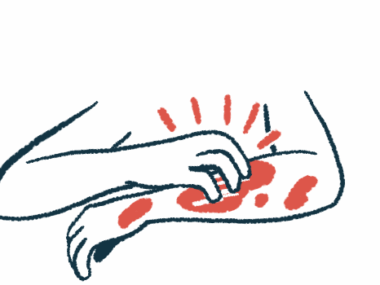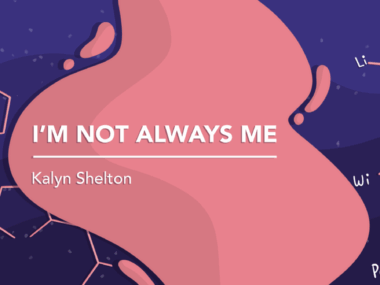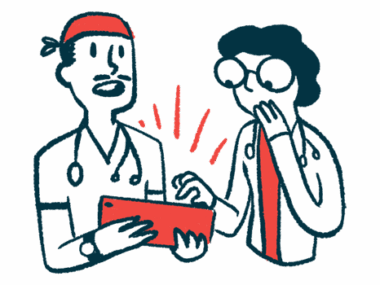Before My Acute Hepatic Porphyria Diagnosis, I Thought I Was Going Insane
After years of unanswered questions about symptoms, a diagnosis finally brings clarity
Written by |

The day of my diagnosis was the first glimpse into my resiliency and willpower. That morning, my doctor called with test results indicating acute hepatic porphyria (AHP). Anger, sadness, fear, and wonder all came crashing into me, knocking me sideways and then completely out of my body. Suspended over my living room, I floated above, observing myself on the phone with my doctor from a safer vantage point.
I was sitting on a blue-gray sectional couch with colorful pillows, a fluffy coral throw blanket on my lap, and a striped rug on the wooden floor. Tears rolled down my cheeks as I tried to determine how I felt about it all. Rising to the top perversely brought relief.
It wasn’t all in my head. I wasn’t making anything up, it’s not that I couldn’t cut it at life. I had been lugging a 12-ton anchor behind me every step of the way.
I was about to enter into a new world, but for the moment, this news was just for me. The clue I needed to crack the case, the missing piece of the puzzle I’d been trying to solve for nearly 20 years. The nausea, insomnia, neurovisceral pain, muscle weakness, digestive distress that didn’t improve regardless of diet changes — it all stemmed from one single disease.
Until that day, I had no appreciation for how remarkable it was that I had gotten as far as I did, despite crippling pain, brain fog, and fatigue. I hung up my phone and cycled through vignettes of my life where my illness screamed to be heard. The day I went to work after a night of light drinking and spent the morning in the ladies room vomiting bile; the morning after hosting a holiday party at a South Boston condo when I first experienced a distended abdomen that resembled pregnancy; the week following my first half marathon when, due to gastroparesis, I couldn’t eat at all. Slowly it dawned on me, I had endured countless acute porphyria attacks.
When I received my diagnosis, it was after weeks of a severe attack at a hospital whose providers couldn’t figure out what was wrong and what treatment might help. I was a 33-year-old distance runner who’d found herself bedridden, vomiting uncontrollably, and gasping in pain. Frustrated with having ruled out the usual suspects, doctors began telling me I was mentally disturbed, suffering from anorexia, and had a personality disorder.
At home in recovery, I was humiliated, worn down, exhausted, unable to walk by myself, and required extra sleep. The idea of moving forward from there seemed an impossibility. I didn’t know how it would look, if I would feel better, or who would be there for me as I navigated this new path.
I allowed myself to live in the past for weeks after my diagnosis, maybe longer. I accumulated memories of being doubled over in pain in public restrooms, on the side of nature trails, in airplanes, and in the bathrooms of apartments I lived in throughout young adulthood. Remembering all the times I thought I might actually die lying on the floor next to the toilet. Fretting I’d be found days later in my pajamas, the TV still on, and my houseplants slowly withering away.
Convinced I was losing my mind, I was certain I could talk about it with no one. These bathroom sessions of vomiting, diarrhea, and excruciating pain were top secret rituals I endured a few times a year. Even my closest confidants didn’t know about them, and they’d always pass after a night or two.
These memories and fears ushered in my transition to life as a person with a rare disease. With all the time I had to myself on the couch that winter, I was destined to live in the past until I was more scared of getting stuck there than of recovering. It wasn’t grieving exactly, and maybe it was a form of denial. I think of it more as the day I began to recognize my power.
That day, I wasn’t ready to take inventory of my losses. I had too many unanswered questions about how my life might change, and was too busy realizing my inner strength. Up until that point, I had endured unspeakable trauma and pain, and I had survived.
Note: Porphyria News is strictly a news and information website about the disease. It does not provide medical advice, diagnosis, or treatment. This content is not intended to be a substitute for professional medical advice, diagnosis, or treatment. Always seek the advice of your physician or other qualified health provider with any questions you may have regarding a medical condition. Never disregard professional medical advice or delay in seeking it because of something you have read on this website. The opinions expressed in this column are not those of Porphyria News or its parent company, Bionews, and are intended to spark discussion about issues pertaining to porphyria.







Leave a comment
Fill in the required fields to post. Your email address will not be published.